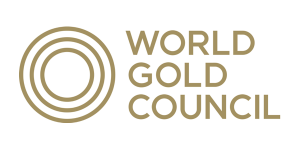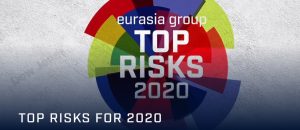 According to World Gold Council(WGC) report title “World Gold Outlook 2020”, Reserve Bank of India (RBI) has been ranked 6th in the largest buyer of sovereign gold abroad. RBI purchased 25.2 tonnes in first 10 months of 2019 to hedge government’s sovereign gold bond issue. RBI (Reserve Bank of India) currently holds 625.2 tonnes of gold, forming 6.6% of its forex reserves. The central banks of China, Russia, Kazakhstan, Turkey, Poland bought more than India in 2019. In 2019, Uzbekistan and Venezuela sold 16.6 tonnes and 30.3 tonnes of gold. The performance of gold in the market in 2019 was best Since 2010. It rises by 18.4% in United States dollar (USD)terms in 2019. According to World Gold Council(WGC) report title “World Gold Outlook 2020”, Reserve Bank of India (RBI) has been ranked 6th in the largest buyer of sovereign gold abroad. RBI purchased 25.2 tonnes in first 10 months of 2019 to hedge government’s sovereign gold bond issue. RBI (Reserve Bank of India) currently holds 625.2 tonnes of gold, forming 6.6% of its forex reserves. The central banks of China, Russia, Kazakhstan, Turkey, Poland bought more than India in 2019. In 2019, Uzbekistan and Venezuela sold 16.6 tonnes and 30.3 tonnes of gold. The performance of gold in the market in 2019 was best Since 2010. It rises by 18.4% in United States dollar (USD)terms in 2019. |
Key points of World Gold Council(WGC) report:
|
 The United Nations has released its annual flagship report “World Economic Situation and Prospects Report 2020″. The report depicts the state of the world economy through the lens of the 2030 Agenda for Sustainable Development. The report is a result of the joint efforts of the United Nations Department of Economic and Social Affairs (UN DESA), the United Nations Conference on Trade and Development (UNCTAD) and the five United Nations regional commissions: Economic Commission for Africa (UNECA), Economic Commission for Europe (UNECE), Economic Commission for Latin America and the Caribbean (UNECLAC), Economic and Social Commission for Asia and the Pacific (UNESCAP) and Economic and Social Commission for Western Asia (UNESCWA). The United Nations World Tourism Organization (UNWTO), UN Office of the High Representative for the Least Developed Countries, Landlocked Developing Countries and Small Island Developing States (UN–OHRLLS), and the International Labour Organization (ILO) also gave their contribution to the report. The United Nations has released its annual flagship report “World Economic Situation and Prospects Report 2020″. The report depicts the state of the world economy through the lens of the 2030 Agenda for Sustainable Development. The report is a result of the joint efforts of the United Nations Department of Economic and Social Affairs (UN DESA), the United Nations Conference on Trade and Development (UNCTAD) and the five United Nations regional commissions: Economic Commission for Africa (UNECA), Economic Commission for Europe (UNECE), Economic Commission for Latin America and the Caribbean (UNECLAC), Economic and Social Commission for Asia and the Pacific (UNESCAP) and Economic and Social Commission for Western Asia (UNESCWA). The United Nations World Tourism Organization (UNWTO), UN Office of the High Representative for the Least Developed Countries, Landlocked Developing Countries and Small Island Developing States (UN–OHRLLS), and the International Labour Organization (ILO) also gave their contribution to the report. |
Key findings of the WESP Report 2020:
|
 On January 14, 2020, the Non-Profit Organization Pratham released its annual report, Annual Status of Education Report, 2019. The report is based on the survey conducted in 26 districts that covers 36,000 children in the age group of 4 to 8 years. On January 14, 2020, the Non-Profit Organization Pratham released its annual report, Annual Status of Education Report, 2019. The report is based on the survey conducted in 26 districts that covers 36,000 children in the age group of 4 to 8 years. |
Key Findings of the report
|
Suggestions of the report
|
 The Union Government has released the “State Energy Efficiency Index 2019”. The index was released during the ‘Review, Planning and Monitoring (RPM)’ meeting held in New Delhi. The index is developed by Bureau of Energy Efficiency (BEE) along with Alliance for an Energy Efficient Economy (AEEE). The SEE Index 2019 traces the expansion and achievements of Energy Efficiency (EE) drives running in 36 states and union territories. The SEE Index 2019 constitutes quantitative, qualitative and outcome based 97 indicators to check energy efficiency initiatives, programs and outcomes in five distinct areas: transport, industry, agriculture, buildings, municipalities, and DISCOMs. State Energy Efficiency Index 2019 has divided States/UTs into 4 groups on the basis of Total Primary Energy Supply (TPES) desired to meet the State’s/UT’s actual energy demand through electricity, coal, oil, gas, etc. across all the sectors. The 4 groups are: ‘Front Runner’, ‘Achiever’, ‘Contender’ and ‘Aspirant’. The Union Government has released the “State Energy Efficiency Index 2019”. The index was released during the ‘Review, Planning and Monitoring (RPM)’ meeting held in New Delhi. The index is developed by Bureau of Energy Efficiency (BEE) along with Alliance for an Energy Efficient Economy (AEEE). The SEE Index 2019 traces the expansion and achievements of Energy Efficiency (EE) drives running in 36 states and union territories. The SEE Index 2019 constitutes quantitative, qualitative and outcome based 97 indicators to check energy efficiency initiatives, programs and outcomes in five distinct areas: transport, industry, agriculture, buildings, municipalities, and DISCOMs. State Energy Efficiency Index 2019 has divided States/UTs into 4 groups on the basis of Total Primary Energy Supply (TPES) desired to meet the State’s/UT’s actual energy demand through electricity, coal, oil, gas, etc. across all the sectors. The 4 groups are: ‘Front Runner’, ‘Achiever’, ‘Contender’ and ‘Aspirant’. |
| Key results of SEE Index 2019: The State Energy Efficiency Index 2019 was topped by Haryana, Karnataka and Kerala while Manipur, Jammu & Kashmir, Jharkhand and Rajasthan performed worst in their respective groups. The states of Haryana, Karnataka and Kerala were in “Achiever” group and there was not a single state in the “Front Runner” group. |
 On January 9, 2020, Ministry of New and Renewable Energy released its year end review. According to the report, over 150 GW of renewable energy has been installed so far in India. On January 9, 2020, Ministry of New and Renewable Energy released its year end review. According to the report, over 150 GW of renewable energy has been installed so far in India. |
India’s initiatives in 2019
|
|
|
 India under Prime Minister Narendra Modi has been listed as the 5th biggest Geo-political Risk of 2020. The listing was done by Eurasia Group in its report. The report states ‘Top 10 Risks’ of the year 2020. India under Prime Minister Narendra Modi has been listed as the 5th biggest Geo-political Risk of 2020. The listing was done by Eurasia Group in its report. The report states ‘Top 10 Risks’ of the year 2020. |
The Top 10 Risks of 2020 are as followed:
|
 On January 9, 2020, the World Bank released its Global Economic Prospect. According to its forecast, the world is expected to grow economically at the rate of 2.5%. This is the lowest prediction since that predicted in 2008-09, 3.1%. By then, the global financial crisis derailed the economy. On January 9, 2020, the World Bank released its Global Economic Prospect. According to its forecast, the world is expected to grow economically at the rate of 2.5%. This is the lowest prediction since that predicted in 2008-09, 3.1%. By then, the global financial crisis derailed the economy. |
|
|
 Indian paddler Manav Thakkar became world no.1 in the latest International Table Tennis Federation (ITTF) rankings in the Under-21 men’s singles category. With this, Thakkar became the fourth Indian to achieve the feat after Harmeet Desai, G Sathiyan and Soumyajit Ghosh. Manav Thakkar achieved the top spot after clinching the Under-21 men’s singles title at the ITTF Challenge Plus Benemax-Virgo North American Open in Markham, Canada. He was also worlded no. 1 in the Under-18 category in February 2018. He was part of the Indian men’s team which won a bronze medal in the 2018 Asian Games in Jakarta. Indian paddler Manav Thakkar became world no.1 in the latest International Table Tennis Federation (ITTF) rankings in the Under-21 men’s singles category. With this, Thakkar became the fourth Indian to achieve the feat after Harmeet Desai, G Sathiyan and Soumyajit Ghosh. Manav Thakkar achieved the top spot after clinching the Under-21 men’s singles title at the ITTF Challenge Plus Benemax-Virgo North American Open in Markham, Canada. He was also worlded no. 1 in the Under-18 category in February 2018. He was part of the Indian men’s team which won a bronze medal in the 2018 Asian Games in Jakarta. |
| Source: The News on AIR |
 The Union Ministry of Housing and Urban Affairs (MoHUA) has announced the results of the 1st and 2nd quarters of the Swachh Survekshan 2020. Indore has topped the cleanliness charts for two consecutive quarters among cities with over 10 lakh population while Kolkata was the worst performer. Jamshedpur has topped the cleanliness charts for two consecutive quarters among cities with 1 lakh to 10 lakh population. The rankings were conducted in a league format for the first time and were split into three quarters (April to June, July to September and October to December 2019) and different categories based on the population of the city. The rankings were based on collection, transportation, processing and disposal of waste. The Union Ministry of Housing and Urban Affairs (MoHUA) has announced the results of the 1st and 2nd quarters of the Swachh Survekshan 2020. Indore has topped the cleanliness charts for two consecutive quarters among cities with over 10 lakh population while Kolkata was the worst performer. Jamshedpur has topped the cleanliness charts for two consecutive quarters among cities with 1 lakh to 10 lakh population. The rankings were conducted in a league format for the first time and were split into three quarters (April to June, July to September and October to December 2019) and different categories based on the population of the city. The rankings were based on collection, transportation, processing and disposal of waste. |
| Some key results of the Swachh Survekshan 2020: |
|
Top three cities with over 10 lakh population in 1st quarter (April to June):
|
|
Top three cities with over 10 lakh population in 2nd quarter (July to September):
|
|
Top three cities with 1 lakh to 10 lakh population in 1st quarter (April to June):
|
|
Top three cities with 1 lakh to 10 lakh population in 2nd quarter (July to September):
|
|
Among the Cantonment Boards, the rankings in 1st quarter (April to June) were as follows:
|
|
Among the Cantonment Boards, the rankings in 2nd quarter (July to September) were as follows:
|
| Secunderabad Cantonment Board in Hyderabad is the worst performer among other cantonment boards. |
| Source: The Hindu |
 NITI Aayog, the policy think tank of Government will launch the second edition of Sustainable Development Goals (SDG) India Index and Dashboard 2019–20 on 30 December 2019 at NITI Aayog, New Delhi. The first edition of SDG India Index was launched in December 2018. It was the first tool developed by any large country to monitor progress towards achieving SDGs at sub-national level. NITI Aayog has the mandate of overseeing adoption as well as monitoring of SDGs in India, at the national and sub-national level. NITI Aayog, the policy think tank of Government will launch the second edition of Sustainable Development Goals (SDG) India Index and Dashboard 2019–20 on 30 December 2019 at NITI Aayog, New Delhi. The first edition of SDG India Index was launched in December 2018. It was the first tool developed by any large country to monitor progress towards achieving SDGs at sub-national level. NITI Aayog has the mandate of overseeing adoption as well as monitoring of SDGs in India, at the national and sub-national level. |
| About SDG India Index and Dashboard 2019–20 The SDG India Index and Dashboard 2019 documents the progress made by India’s States and Union Territories (UTs) towards implementing the 2030 SDG targets. Besides indicating where the States and UTs currently are on SDG implementation, the Index and Dashboard also charts distance to be travelled to reach SDG targets. It has been developed by Union Ministry of Statistics and Programme Implementation (MoSPI) in collaboration with United Nations in India, and Global Green Growth Institute. Index and Dashboard 2019 covers 16 out of 17 SDGs and a qualitative assessment on Goal 17. This marks an improvement over 2018 Index, which covered only 13 goals. On the basis of progress made, the Index ranks all States and UTs on 100 indicators drawn from MoSPI’s National Indicator Framework, comprising of 306 indicators. |
You need to login to perform this action.
You will be redirected in
3 sec
